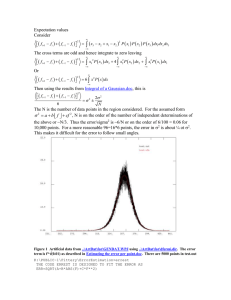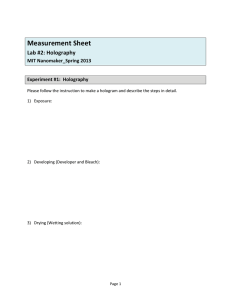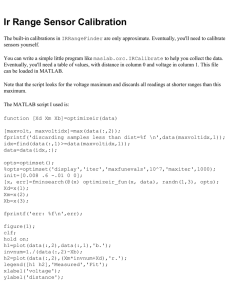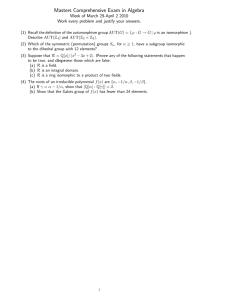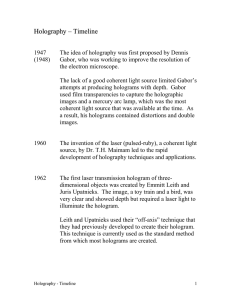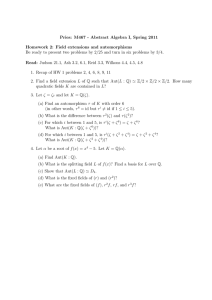MicrowaveHolography.docx
advertisement
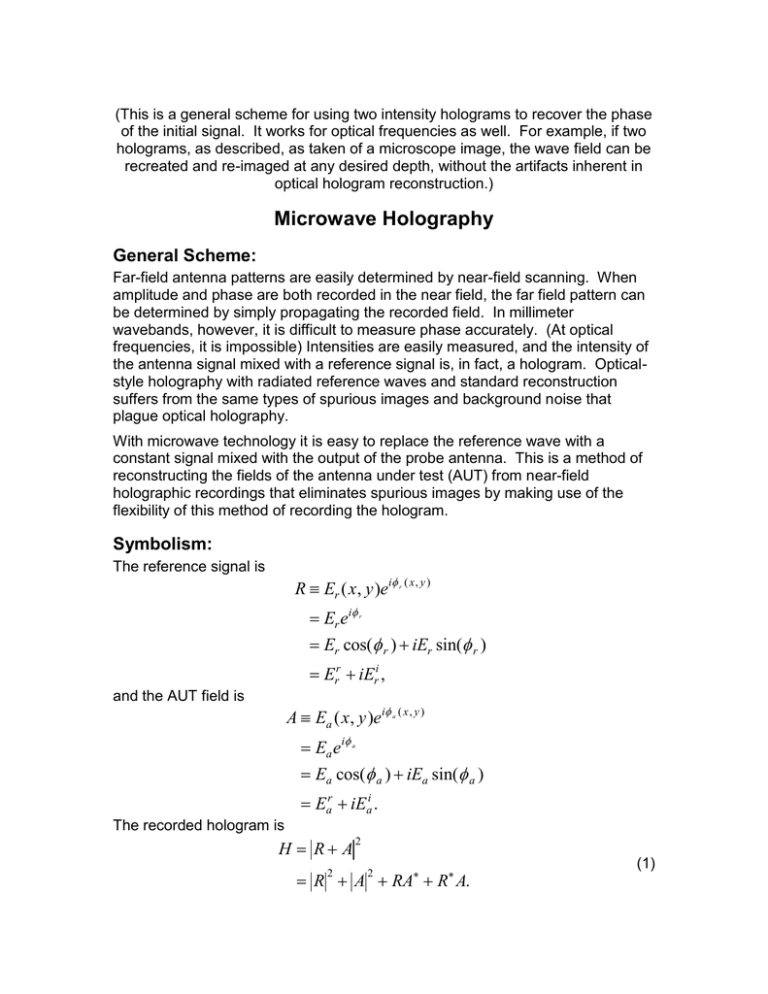
(This is a general scheme for using two intensity holograms to recover the phase of the initial signal. It works for optical frequencies as well. For example, if two holograms, as described, as taken of a microscope image, the wave field can be recreated and re-imaged at any desired depth, without the artifacts inherent in optical hologram reconstruction.) Microwave Holography General Scheme: Far-field antenna patterns are easily determined by near-field scanning. When amplitude and phase are both recorded in the near field, the far field pattern can be determined by simply propagating the recorded field. In millimeter wavebands, however, it is difficult to measure phase accurately. (At optical frequencies, it is impossible) Intensities are easily measured, and the intensity of the antenna signal mixed with a reference signal is, in fact, a hologram. Opticalstyle holography with radiated reference waves and standard reconstruction suffers from the same types of spurious images and background noise that plague optical holography. With microwave technology it is easy to replace the reference wave with a constant signal mixed with the output of the probe antenna. This is a method of reconstructing the fields of the antenna under test (AUT) from near-field holographic recordings that eliminates spurious images by making use of the flexibility of this method of recording the hologram. Symbolism: The reference signal is R Er ( x, y )ei r ( x, y ) Er ei Er cos( r ) iEr sin( r ) r Err iEri , and the AUT field is A Ea ( x , y )ei a ( x, y ) Ea ei Ea cos( a ) iEa sin( a ) a Ear iEai . The recorded hologram is H R A 2 R A RA R A. 2 2 (1) Direct solution for the AUT Field This technique makes use of the ability to shift the phase ( r ) of the reference wave by an arbitrary angle, . Let two holograms be recorded, identical except for a phase difference of in the reference waves; i.e.: R(1) Er ei r Err iEri (1) R( 2 ) Er ei ( (1) r ) Err iEri (2) (2) and the holograms are H(1) R(1) A 2 2 H( 2 ) R( 2 ) A . The solution proceeds as follows: 2 1. Measure A when the reference signal is turned off. 2 2. Measure R when the AUT is turned off. In the case of an injected 2 reference signal, R is simply a constant scalar. 2 2 3. Subtract A and R from the two measured holograms. Referring to equation (1), we see that: H H R A 2 2 RA R A 2( Ear Err Eai Eri ). 4. From the expressions for the two holograms, H(1) 2( Ear Err Eai Eri ) (1) (1) H(2 ) 2( Ear Err Eai Eri ), (2) solve for the AUT field components: (2) Ear i i 1 H(1) Er H(2 ) Er 2 Eri Err Err Eri (2) (2) (1) (1) (2) (1) and Eai r r 1 H(1) Er H(2 ) Er . 2 Eri Err Err Eri (2) (2) (1) (1) (2) (1) Thus, the AUT field is recovered, artifact free except for measurement errors, from the measured holograms and the measured (or otherwise known) reference source. The denominator in the above expressions, in terms of the reference amplitude, E r , and phase shift between the two holograms, , is Er sin( ) . Thus, 2 choosing / 2 allows the denominator to be replaced with R , measured as described in step (2) above. 2
